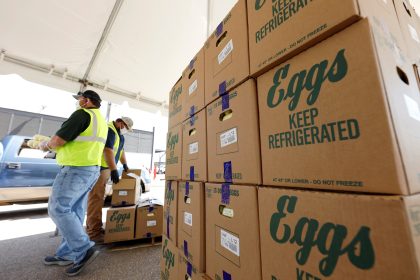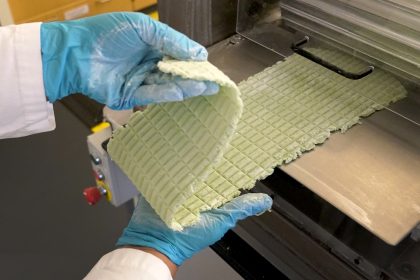USDA Implements New Framework Focused on Improving Nutrition and Food Security

WASHINGTON — The U.S. Department of Agriculture is currently working to implement a new framework aimed at transforming food systems, especially for underserved communities.
“It’s a new way of thinking about how to transform the food system to meet the current needs,” said Sara Bleich, Director of Nutrition Security and Health Equity for the Food and Nutrition Service at the U.S. Department of Agriculture, during a video call with The Well News.
Prior to this year, Bleich’s role as director of nutrition security did not exist within the USDA. The role is particularly meaningful for Bleich, who says she grew up in a home with two siblings in inner city Baltimore, Maryland, with two parents who both worked as public school teachers and made salaries that could not support a healthy, nutritious diet for their children.
That’s why her family relied on USDA programs, which typically service low-income families, such as the Special Supplemental Nutrition Program for Women, Infants, and Children, and the Supplemental Nutrition Assistance Program, as well the National School Lunch Program.
“I promised myself that I would do things to benefit people who were from communities like the one that I was raised in,” said Bleich.
“It’s been a career-long effort going on 20 years now where I focus on food nutrition policy and underserved populations. … To be able to work on these programs at a time when … nutrition security is a goal … helps me understand what it’s like to walk in the shoes of someone who is a recipient of [these programs],” said Bleich.
In a speech last week, Bleich said that U.S. Secretary of Agriculture Tom Vilsack described that there will be a strong focus on transforming food systems for communities impacted the hardest by food insecurity: Black, Latino and Hispanic, native populations and children.
“What COVID-19 did is it brought disparities and the vital need for healthy foods to the forefront,” said Bleich.
A study completed by the National Institutes of Health in March 2021 estimates that nearly two-thirds of COVID-19 hospitalizations in the United States were related to obesity, diabetes, hypertension and heart failure.
“These disparities are really associated with decades of structural racism, and limitations to reach food outlets, etc.,” said Bleich.
“We are at a moment in time where we don’t just want to give people calories to fill up their fridge, we want to give them calories that count, that are going to support their health and their well-being,” continued Bleich.
According to Bleich, the new USDA framework will focus on four key areas: making it easier for the United States to adapt and mitigate the severe consequences of changing climate by reducing the carbon footprint of food production; delivering a better deal for farmers, ranchers and consumers through new markets; improving the health of communities by increasing access to healthy, locally grown foods; and sustainably producing more food by allowing the United States to contribute to global food security through increased exports.
Bleich said more community messaging needs to happen around enrollment in USDA programs, as USDA data shows that only one in five individuals who are eligible for SNAP program participation in the United States actually enrolls, and only one in two individuals who are eligible for WIC.
“Dollars are being left on the table,” said Bleich.
Barriers to accessing benefits for program participants, Bleich said, include a lack of knowledge of how and where to enroll in WIC or SNAP, and issues such as immigration fears.
“Pockets of populations where enrollment is a challenge are concerned about enrollment due to public charge,” said Bleich.
Bleich has been traveling the country engaging with members from the public health community, health care sector, advocacy groups, various nonprofit organizations, parts of government, and now even parents, to get everyone on the same page about what good nutrition is, and where the new USDA framework is trying to go.
Most recently, Bleich met with professionals from the Cleveland Clinic in Ohio on June 1, and on Tuesday she attended an American Heart Association meeting in Washington, D.C.
“All of the areas in the announcement … add up to a few billion dollars … [and] much of this is based on existing funding that we use and are in [the] process of rolling out in this framework that is [focused on] food system transformation,” said Bleich.
Alexa can be reached at [email protected]

























